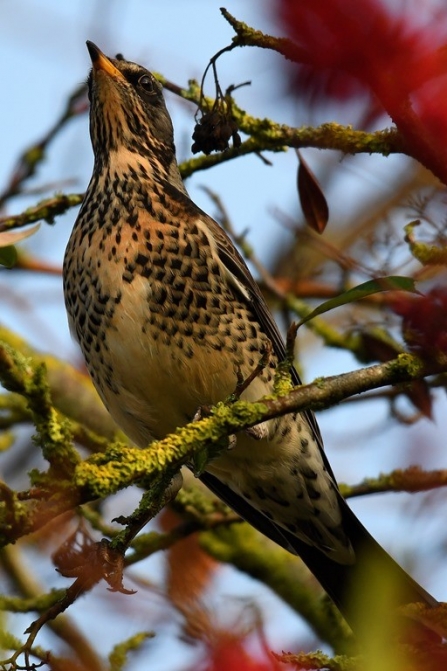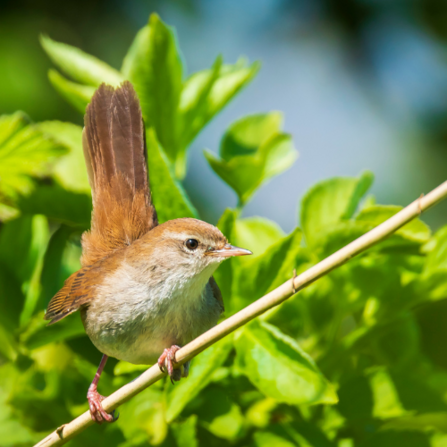Whereas we might herald the first singing cuckoo or chiffchaff in spring as a reassuring reminder that summer is not too far away, we are far less enthusiastic about listening out for similar seasonal clues that the birds might give us in autumn. To be fair, the calls of our arriving winter birds are not in the onomatopoeic category of those two headliners in spring, but they are there if you tune in, and you don’t have to go far to hear them.
Winter is coming
Teal flying over Greylake. Photo: Charlie Wootton

Fieldfare among berries - Chris Chappell
On a clear, calm evening, step out of your house, clear your mind, and listen for the subtle ‘seep’ of redwings flying overhead. These ‘winter thrushes’ are arriving from Scandinavia and northern Europe to escape the worst of the cold and feed on berries in our hedgerows and, sometimes, gardens. Its larger travelling cousin is the fieldfare, which has a much harsher ‘chak-chak’ flight call. If you are out during the day and hear a chirruping call overhead, that sounds a bit like running your finger along a comb, that will be a skylark on the move. During winter, there will be more of these declining birds, along with flocks of meadow pipits, which have a ‘mip, mip’ call, feasting on our southern unfrozen fields.

Cetti's warbler. Photo: CANVA/ Getty Images
And if you would like to experience the full winter soundscape, then head to one of our Avalon Marshes reserves, Westhay Moor or Catcott, where you will hear, and hopefully see, some real avian delights:
- ‘Whistling’ wigeon gather in large numbers on our open waters; the males have a brownish head, creamy crown and pointed tail.
- ‘Yipping’ teal; much smaller than the other ducks, but very pretty, with a big green eye stripe and pale undertail.
- ‘Rasping’ snipe, which may ‘disappear’ on the ground, but when disturbed by a passing marsh harrier, will take to the air in a noisy flock with their long beaks and bulky bodies making them visible to the casual observer.
- ‘Explosions’ of sound from Cetti’s warblers, again usually unseen, but in winter you may spot them flitting between bare willows; look out for a white stripe above the eye and broad, rounded tail.
Want to learn more? Join Kevin on a guided tour of Westhay Moor National Nature Reserve. Booking link here: Guided Walks at Westhay with Kevin Anderson | Somerset Wildlife Trust

